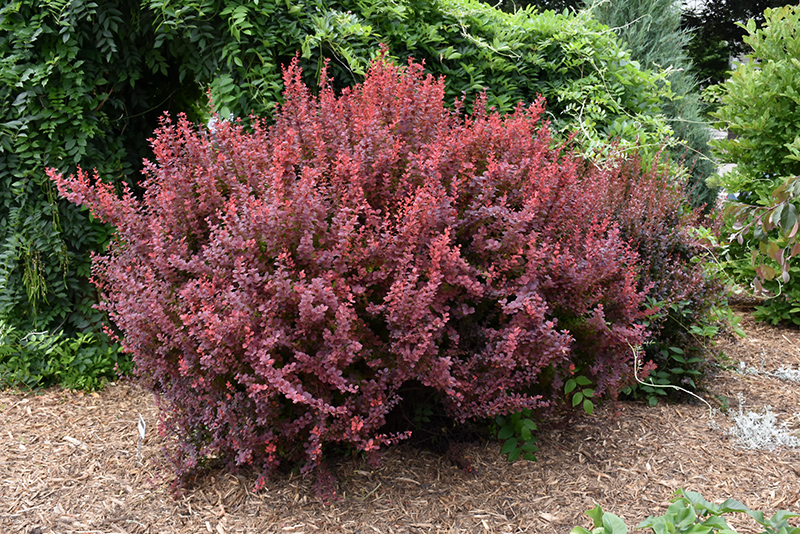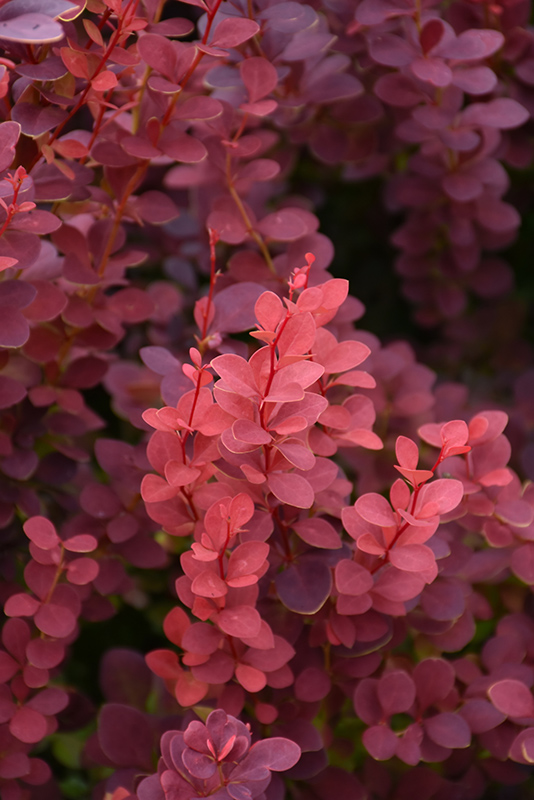Ruby Carousel Japanese Barberry
Berberis thunbergii 'Bailone'
Height: 3 feet
Spread: 3 feet
Sunlight:
![]()
![]()
Hardiness Zone: 4a
Description:
A well-shaped mound of purple foliage all summer long, turning to brilliant red in fall; very showy, great as a color contrast in the landscape
Autumn Enthusiasm
Fall is for planting! Did you know that fall is the best time to plant your deciduous trees and shrubs? Be the envy of all your neighbors with striking shades of reds, oranges, and purples. Plant something breathtaking today!
Ornamental Features
Ruby Carousel Japanese Barberry is primarily grown for its highly ornamental fruit. The fruits are showy red drupes carried in abundance from early to late fall. It has attractive brick red deciduous foliage. The small oval leaves are highly ornamental and turn an outstanding red in the fall. It has clusters of yellow flowers hanging below the branches in mid spring, which are interesting on close inspection.
Landscape Attributes
Ruby Carousel Japanese Barberry is a dense multi-stemmed deciduous shrub with a more or less rounded form. Its relatively fine texture sets it apart from other landscape plants with less refined foliage.
This shrub will require occasional maintenance and upkeep, and can be pruned at anytime. Deer don't particularly care for this plant and will usually leave it alone in favor of tastier treats. Gardeners should be aware of the following characteristic(s) that may warrant special consideration;
- Spiny
Ruby Carousel Japanese Barberry is recommended for the following landscape applications;
- Mass Planting
- General Garden Use
Planting & Growing
Ruby Carousel Japanese Barberry will grow to be about 3 feet tall at maturity, with a spread of 3 feet. It tends to fill out right to the ground and therefore doesn't necessarily require facer plants in front. It grows at a medium rate, and under ideal conditions can be expected to live for approximately 20 years.
This shrub does best in full sun to partial shade. It is very adaptable to both dry and moist growing conditions, but will not tolerate any standing water. It is considered to be drought-tolerant, and thus makes an ideal choice for a low-water garden or xeriscape application. It is not particular as to soil type or pH, and is able to handle environmental salt. It is highly tolerant of urban pollution and will even thrive in inner city environments. This is a selected variety of a species not originally from North America.



